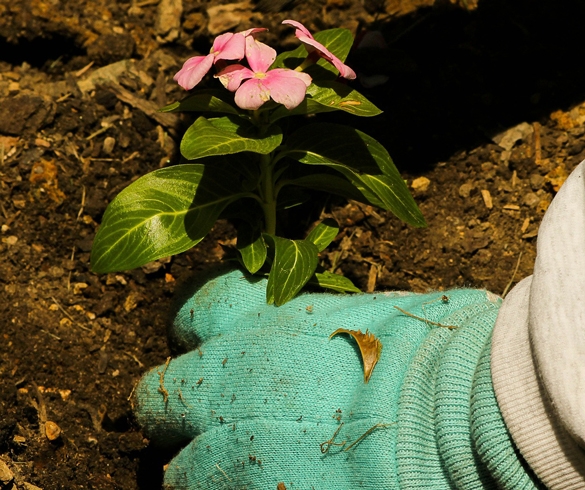
Guide to Bark Mulch
– Fall gardening rituals are often a welcome change from the busyness of the growing season. We may have leaves to rake and spent plants to cut down, but the pace tends to be a bit slower, more relaxed. And garden cleanup brings a sense of order to the end of the season, especially after we spread a fresh covering of mulch around trees, shrubs, and perennials. Mulch has become a bit of a fashion statement, as witnessed by the colored mulches on the market, but mulch serves a utilitarian purpose as well. It reduces weed growth, conserves moisture in the soil, and moderates temperature fluctuations in the soil. Fall mulching can help plants survive the winter, and the best material for this purpose is bark mulch.
Several bark and wood mulches are available: bark nuggets, mini-nuggets, hardwood mulch, and shredded mulch. Some come in bags, some in bulk. A chief advantage of these mulches compared with other organic mulches is that they remain attractive and functional for a couple of years. That\’s why they are the best choice for mulching around trees, shrubs, and other long-lived plants.
What\’s In Bark Mulch?
According to the National Bark & Soil Producers Association, any mulch with \”bark\” in the name must be at least 85 percent bark of that named tree. A \”mulch\” material, on the other hand, need be only 70 percent of the named material, and it may be either bark or wood. The primary difference is how long the mulch will last before breaking down. Bark is coarser, with larger pieces than shredded bark or other wood mulch, so it doesn\’t decompose as quickly. But it can be too coarse for some uses, such as around soft-stemmed perennials.
Spreading Mulch
Three to four inches of bark mulch is a good covering to apply around trees and shrubs in spring and fall. A thicker layer can reduce air circulation in the soil, which will retard plant growth. Also, take care not to pile mulch around the main stem of a plant or tree trunk. You frequently see these volcano cones of mulch surrounding tree trunks, but this technique can severely damage a tree by keeping the bark moist and inviting disease and insects, not to mention hungry rodents in winter. The mulch should be spread in a circle around the tree no closer than about 3 inches from the trunk. Use a thinner layer — 2 to 3 inches — around perennials.
Use shredded mulch around perennials and on walkways because large bark chips are too coarse. On steep slopes, shredded mulch (hardwood stays in place better than softwood) is best because large bark chips can easily wash away.
As bark decomposes, it uses nitrogen from the soil. This doesn\’t usually cause a nitrogen deficiency if the mulch stays on the surface of the soil because it decomposes slowly. Shredded bark decomposes more quickly, so if you use this type of mulch and your plants show any signs of nitrogen deficiency, such as yellowing leaves, you might want to add some nitrogen fertilizer before spreading new mulch. If you mix mulch into the soil, incorporating nitrogen fertilizer at the same time is a good idea.
A former floral designer and interior plantscaper, Kathie Bond-Borie has spent 20 years as a garden writer/editor, including her current role as Horticultural Editor for the National Gardening Association. She loves designing with plants, and spends more time playing in the garden – planting and trying new combinations – than sitting and appreciating it.
Source
National Gardening Association

